Where Brahma (spiritual power) and Kshatra (worldly power) move together, may I know that sacred world where the Gods move together with Agni (the sacred fire).
Shukla Yajur Veda 20.25
The ancient Vedic seers provided different teachings for different levels and temperaments of human beings. They recognized an organic order to society, in which various individuals and classes perform different functions for the benefit of the whole. This is just like the various organs of the body in which the hands perform one function and the feet another. A healthy society, like a healthy body, must have a place for all its different members and honor all their different functions. It cannot make one function, however important, exclude or denigrate the others.
The sages sought to spiritualize society through emphasizing the ultimate goal of liberation (Moksha), but at the same time they recognized that the evolution of souls takes place over many births and in a number of ways. They did not try to impose an artificial spiritual standard upon everyone, trying to turn all people into monks and renunciates, but formed an organic social order that allowed for all necessary types of human experience. While much of this system in time degenerated into mere caste by birth, it was based on a great and important idea that is universal and must once more be considered.
Unfortunately, this comprehensive Hindu Dharma has been misunderstood in modern times and there has been an attempt to impose certain practices appropriate for one group of society on all groups. Particularly the role of the Kshatriya, the political or warrior class has been misunderstood. Most obvious in this regard is the absolute non‑violence taught by Mahatma Gandhi.
 Gandhi rejected the traditional Kshatriya role in society by teaching that it is wrong for Hindus to use force under any circumstances, even to defend themselves. Gandhi took the non‑violence appropriate to monks and yogis and tried to impose it upon the political and military classes of the country, and on the population of Hindus as a whole. He opposed any use of force by Hindus and was against India even having an army. While non-violence can be a useful political tool in certain circumstances, Gandhi turned it into an article of faith for Hindus, a dogma not to be questioned but to be applied mechanically in all situations.
Gandhi rejected the traditional Kshatriya role in society by teaching that it is wrong for Hindus to use force under any circumstances, even to defend themselves. Gandhi took the non‑violence appropriate to monks and yogis and tried to impose it upon the political and military classes of the country, and on the population of Hindus as a whole. He opposed any use of force by Hindus and was against India even having an army. While non-violence can be a useful political tool in certain circumstances, Gandhi turned it into an article of faith for Hindus, a dogma not to be questioned but to be applied mechanically in all situations.
We must admit that this strategy of non‑violence may have been appropriate against the British, who had some refinement of feeling. It was employed at a time when Hindus did not have much military strength or knowhow as an alternative. We can admire the Mahatma for the decisive way in which he used non‑violence, demonstrating an admirable courage in standing up to the British and not hesitating to criticize their wrong actions.
Similarly his stance against the Christian missionaries and their conversion policies was strong and fearless. Certainly he was an intellectual Kshatriya at least, using the word as a weapon against oppression. We must also remember that Gandhi himself fought in the British army when he was young and in South Africa and was a recruiter for the British army and may have been reacting against his own past and the kind of false Kshatriya he saw among the British.
However, this emphasis on absolute non‑violence has weakened the Kshatriya Dharma in India and created a situation in which many Hindus feel that it is against their religion to have any warrior spirit at all. It has caused Hindus to abandon the political field to people of different and often anti‑Hindu sentiments. Hindus have forgotten the warrior voices both in the modern Indian independence movement, notably Sri Aurobindo, and in India’s illustrious past of great kings and princes.
If a Dharmic Kshatriya is not created through the force of Brahma or spiritual knowledge, then the likelihood is that an adharmic Kshatriya will come to fill in the vacuum. This is exactly what occurred in modern India. After the excessive emphasis on non‑violence in the Indian independence movement no genuine Kshatriya was enabled to rule country.
This left the country prey to a false Kshatriya, based mainly upon Marxist ideals, mixed with warlord temperaments, such as in communist countries, who misled the people and prevented the real growth of the nation. The decline of a Kshatriya Dharma in India weakened the character of the nation and resulted in a situation that would have probably horrified Gandhi himself. His own Congress party, which he wanted to dissolve once independence was achieved, has now become so riddled with corruption that it has nearly lost all credibility, not to mention integrity.
Vedic Non-Violence
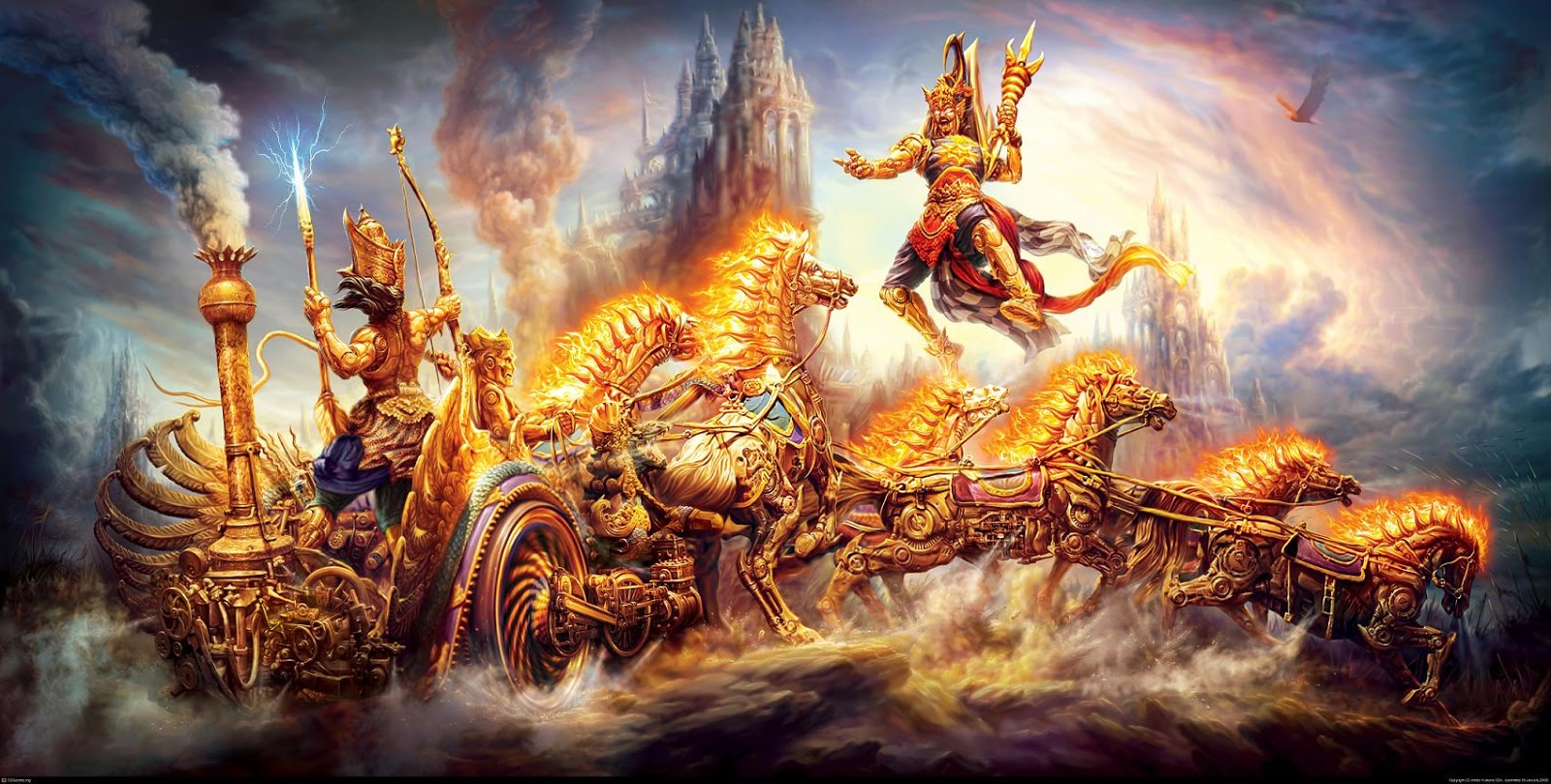 We should contrast the Gandhian view of non-violence with that of the older Hindu tradition, particularly the teachings of Sri Krishna and the Mahabharata. This great epic contains many chapters on the role of the Kshatriya class and its need to apply force in order to uphold right behavior in society. Krishna in the Bhagavad Gita taught several levels of teaching, not only the way of renunciation but also the Yoga of works, and always honored the Kshatriya Dharma.
We should contrast the Gandhian view of non-violence with that of the older Hindu tradition, particularly the teachings of Sri Krishna and the Mahabharata. This great epic contains many chapters on the role of the Kshatriya class and its need to apply force in order to uphold right behavior in society. Krishna in the Bhagavad Gita taught several levels of teaching, not only the way of renunciation but also the Yoga of works, and always honored the Kshatriya Dharma.
Sri Krishna worked throughout his life to create a Dharmic Kshatriya, an order of noble souls who could establish and sustain a Dharmic social order. He was willing to promote a great battle, a civil war among the Kshatriya themselves, to allow his hand picked Dharmic Kshatriya followers to gain power. He purified the Indian Kshatriya with the blood of a Dharmic war.( Dharma Yudh )
Because of his great achievement a Kshatriya order was established in India that maintained a Dharmic society for many centuries. This example should not be lost on us today. The Kshatriya of India today, its social and political leaders, require a similar Dharmic purification, perhaps not a Kurukshetra in the literal sense but a purification from false values and egoistic practices that are rampant everywhere.
Sri Krishna repeatedly encouraged Arjuna and his brothers to fight, though they were reluctant to do so. He never asked them to suppress their Kshatriya spirit. He raised up the spirit of Arjuna on the battlefield to fight his own kinsmen and gurus for the sake of Dharma.
One cannot imagine a more difficult battle than this. Should there be any doubt that absolute non‑violence is always better, this would have been the ideal situation in which to employ it. But it was Krishna himself who made the Pandavas go through with this terrible battle.
After the war when Yudhishthira lamented the loss of life in the battle, with so many friends and kinsmen slain, Krishna and the sages came to point out the value of such a Kshatriya role in spite of the dire consequences involved. This section of the text, Raja Dharma Parva, on the role of Kings, is worth much study in this context.
There is an entire chapter on the greatness of the Raja Danda or royal use of punishment (Shanti Parva XV.7), which states, “They sink into blinding darkness, if the Danda (rod of punishment) is not employed.” When Yudhishthira wanted to leave the world and become a monk he was told not to and taught, “The Danda (rod) is the Kshatriya Dharma, not shaving one’s head (becoming a monk, XXIII. 47).” The same section of the text teaches skill in battle and a righteous war as the duty of the Kshatriya and the foundation of a healthy society. It says that the Kshatriya Dharma is the basis of spirituality because without the protection of a dharmic Kshatriya, Brahmins, monks and yogis themselves will have no protection or support.
Even Buddhism was not the non-violent movement that it is portrayed today. Not only all Hindu but all Buddhist and Jain kings had their armies. Ahimsa as referring to the rejection of any use of force or employment of weapons was not traditionally employed as a state policy in Buddhism either but only as a policy of personal spiritual practice. Even the great Buddhist King Ashoka did not disband his armies or stop the policing of his borders.
Absolute and Relative Non-violence
 We must discriminate between what we could call “absolute non-violence” and “relative non-violence.” Absolute non-violence means not even raising a hand even to defend oneself from unjust attack. Relative non-violence means only using violence to defend oneself and one’s community.
We must discriminate between what we could call “absolute non-violence” and “relative non-violence.” Absolute non-violence means not even raising a hand even to defend oneself from unjust attack. Relative non-violence means only using violence to defend oneself and one’s community.
Relative non-violence is appropriate for communities and for those who have not renounced the world, and above all for the Kshatriya or noble class of people who cannot idly stand by in the face of oppression. Absolute non‑violence – that is, not resorting to force even to defend one’s life and property – is a Dharma in Hinduism for Sannyasins or those who have renounced the world, and therefore have nothing to defend.
Yet even Swamis can use force to protect their country should they choose to do so when their country is attacked. We note that in the course of Indian history that many monks and Brahmins found it necessary to resort to violence to defend their country against invaders. A number of monastic orders had militant sides to protect the Dharma.
The Indian independence movement received much impetus from Swamis and Yogis in Bengal around the turn of the century, including such figures as Sri Aurobindo and Sister Nivedita, the fiery Irish woman disciple of Vivekananda, who advocated the use of force to overthrow the British. Freedom fighters who advocated the use of force against the British, included Tilak, Aurobindo, and Savarkar. These figures also followed the teachings of Yoga and Vedanta and were not less spiritually minded than Gandhi.
 Such dharmic warriors followed a long tradition including Shivaji, Ranjit Singh, Rana Pratap, and such avatars as Rama and Krishna, who took up arms to defend the Dharma. Sri Aurobindo also supported the allied cause against Hitler in World War II and the American cause against the communists in the Korean War. Gandhi meanwhile launched his Quit India movement in 1942, interfering with the British war effort, in spite of what was known about Hitler’s actions.
Such dharmic warriors followed a long tradition including Shivaji, Ranjit Singh, Rana Pratap, and such avatars as Rama and Krishna, who took up arms to defend the Dharma. Sri Aurobindo also supported the allied cause against Hitler in World War II and the American cause against the communists in the Korean War. Gandhi meanwhile launched his Quit India movement in 1942, interfering with the British war effort, in spite of what was known about Hitler’s actions.
This different view than Gandhi was not because Sri Aurobindo’s mentality was unspiritual. He knew the circumstances in which non-violence could work and those in which it would be self-defeating. Gandhian non-violence, however idealistic, like his asking of the Jews to offer themselves to Hitler’s furnaces in order to melt Hitler’s heart, lacked at times even common sense.
Absolute non‑violence is no more appropriate for everyone than are monastic rules like celibacy. Gandhi tried to impose celibacy upon his workers as well, which similarly, given human nature, did not work.
Like other monastic rules, non‑violence was never turned into a general rule of social conduct in the older Hindu Dharma. Historically Hindu, Buddhist and Jain Kings of India, Tibet and China were allowed to use force to protect their kingdoms, and to punish criminals, even though their religions teach non-violence as a spiritual discipline.
 To impose an artificial standard of non-violence on a society as a whole undermines the Kshatriya Dharma, or the political Dharma, and can damage the social order. It can undermine the will of a people to defend itself and weaken its sense of community identity. Those who have families and homes have a natural instinct to defend them when attacked. To tell such people that it is wrong for them to defend their loved ones is to make them feel guilty and confused.
To impose an artificial standard of non-violence on a society as a whole undermines the Kshatriya Dharma, or the political Dharma, and can damage the social order. It can undermine the will of a people to defend itself and weaken its sense of community identity. Those who have families and homes have a natural instinct to defend them when attacked. To tell such people that it is wrong for them to defend their loved ones is to make them feel guilty and confused.
It weakens their self‑esteem and vitality, which only makes them prey to violence from the outside. It invites attack and thereby leads to more bloodshed than if people were allowed to defend themselves in the first place.
When we try to artificially impose a standard of absolute non-violence upon ordinary people, or make it the policy of a nation, we are acting in violation of the natural order. Such an impossible standard can only undermine the social order. In fact, the imposition of non-violence on everyone is itself a form of violence, the imposition of an artificial standard on our natural instincts that must cause suffering.
 The great Swamis of India did not seek to undermine the Kshatriya Dharma. Adi Shankaracharya accepted the value of Kshatriya Dharma as he did a Vedic order for Hindu society. Let us also look at the example of the great Swami Vidyarananya of Sringeri (fourteenth century), an Advaitin (non-dualist) and a Mayavadin, who yet inspired two Hindu Kshatriyas who had become Muslims to reconvert to Hinduism and found the great Hindu kingdom of Vijayanagar to protect the Dharma. He did not ask for these Kshatriya rulers to follow absolute non‑violence.
The great Swamis of India did not seek to undermine the Kshatriya Dharma. Adi Shankaracharya accepted the value of Kshatriya Dharma as he did a Vedic order for Hindu society. Let us also look at the example of the great Swami Vidyarananya of Sringeri (fourteenth century), an Advaitin (non-dualist) and a Mayavadin, who yet inspired two Hindu Kshatriyas who had become Muslims to reconvert to Hinduism and found the great Hindu kingdom of Vijayanagar to protect the Dharma. He did not ask for these Kshatriya rulers to follow absolute non‑violence.
One might ask that if all is Maya or illusion, why would a great Swami start a kingdom? Such a question shows a profound misunderstanding of Hindu Dharma. One can only transcend the world by fulfilling one’s Dharma, and even if one has done this, one still has the duty to others to teach, guide and raise the world. Let us also look at the example of Samartha Ramdas, who inspired the great King Shivaji of the Marathas and his successors, whose armies were the main factor behind the defeat of the Mogul Empire.
What is particularly strange is that Mahatma Gandhi’s policies have become accepted by people East and West as representing the original teachings of Hinduism, which is not the case. Gandhi took solace in the Bhagavad Gita as the main holy book in his life, though the Gita promotes the Kshatriya Dharma and honors a defensive war.
It could be argued that Gandhi did not understand the yogic principle of non‑violence – a point that Sri Aurobindo made.[1] Gandhi’s non‑violent resistance is not the same as the non‑violence outlined in traditional texts like the Yoga Sutras of Patanjali, which is not a form of resistance employed on a social level but a spiritual principle applied in individual sadhana.
Gandhi put people, including himself, in situations where they would draw the violence of others upon themselves. This was done in order to make the British rulers feel guilty about the violence they were forced to perpetrate upon passive victims, so that their bad conscience would force them to change their ways. Such “passive resistance” is a political weapon and can be a very useful one. But it should not invalidate the instinct for self‑defense and the nobility of fighting for truth.
Non‑violent resistance in the political sphere is particularly useful for a large group dealing with a superior, preferably less numerous enemy who has a conscience. But such non‑violent resistance is not useful in all circumstances. An enemy who has no conscience, like Hitler, would not be moved by it, but would exploit it to his own advantage, using it to disarm his opponents.
When the enemy has no real conscience the only recourse is the force of arms, which requires a true Kshatriya class trained in fighting. Yet Gandhi encouraged the Jews to follow such absolute non-violence and passively offer themselves to Hitler.
Ahimsa has a different meaning in a Kshatriya context. It means protecting people and reducing the violence directed against them by outside invaders or by criminals. This was the type of violence that Krishna and the Pandavas engaged in to defend the Dharma. Yet this type of Kshatriya expression of ahimsa was not followed or promoted by Gandhi.
The Need for a Kshatriya Revival
 To want to fight unrighteous people who are invading your country, or falsely ruling over your people, is the appropriate instinct of the Kshatriya, to deny which is to deny their vitality. Once the vitality of the Kshatriya – who represent the vital or energetic aspect of society – is weakened then the whole society can become devitalized. This dogmatic emphasis on non‑violence has set in motion a one‑sided teaching and a distortion that has weakened modern India.
To want to fight unrighteous people who are invading your country, or falsely ruling over your people, is the appropriate instinct of the Kshatriya, to deny which is to deny their vitality. Once the vitality of the Kshatriya – who represent the vital or energetic aspect of society – is weakened then the whole society can become devitalized. This dogmatic emphasis on non‑violence has set in motion a one‑sided teaching and a distortion that has weakened modern India.
Rather than defending themselves, Hindus turn on other Hindus who try to defend themselves against unjust attacks, even if it means being sympathetic with those enemies who are attacking fellow Hindus.
If Hindus criticize non‑Hindus, even truthfully, it is Hindus themselves who protest. Whereas if non‑Hindus attack or criticize Hindus, other Hindus try to look upon the attack with equanimity, tolerance, or even try to make the Hindus who are attacked responsible for it.
To insist that all Hindus follow absolute non‑violence in their social life is to effectively destroy any real Kshatriya class or instinct. Owing to the self‑effacing view so created, true Kshatriyas in India doubt themselves and are ashamed of their instincts to protect the country.
Hindus often feel that to be real Hindus they could never use any weapon, nor should they defend themselves, their country or their family. They hesitate to defend their religion against distortions in the media or in the textbooks of their own country. Such apparent non‑violence or tolerance is more cowardice than the expression of peace.
The integral teaching of original Hinduism honors the Kshatriya Dharma and the place of the warrior. A nation can only be built up and ruled by Kshatriyas. That is their appropriate role in society. Please note that I am not speaking about caste here, but about the mentality and instincts of a person.
 True Kshatriyas may come from any so-called caste today and are to be known by their character and their actions. Should there not be an adequate Kshatriya class in a country, all the other classes must take up a Kshatriya activity, even the Brahmins. In fact a true Brahmin must have learned the value of Kshatriya Dharma in order to be really able to go beyond it.
True Kshatriyas may come from any so-called caste today and are to be known by their character and their actions. Should there not be an adequate Kshatriya class in a country, all the other classes must take up a Kshatriya activity, even the Brahmins. In fact a true Brahmin must have learned the value of Kshatriya Dharma in order to be really able to go beyond it.
Governing a country requires strong leadership, including a well‑trained army and police force, not as forces of tyranny but for protection. There are many people in society who contain the gunas (qualities) of rajas and tamas, aggressive and obstinate tendencies which, if not controlled through clear laws and punishments, will wreak havoc.
Sattvic (spiritual) methods like non‑violence work only if there is enough sattva in people to respond to these, which unfortunately is not always the case. For this reason traditional Hindu teachings like the Mahabharata emphasize the importance of danda or the use of punishment to maintain law and order (Dharma).
The nations of the world are not sattvic or spiritual entities but worldly, commercial and military entities that are neither sympathetic nor conscious of spiritual values. They must be dealt with first by the right diplomacy, which is the role of intellectual Kshatriya. But a good army must be there as well. This does not mean that India should not be idealistic or naive in dealing with the nations of the world who follow their own principles that may not be not rooted in any Dharmic tradition.
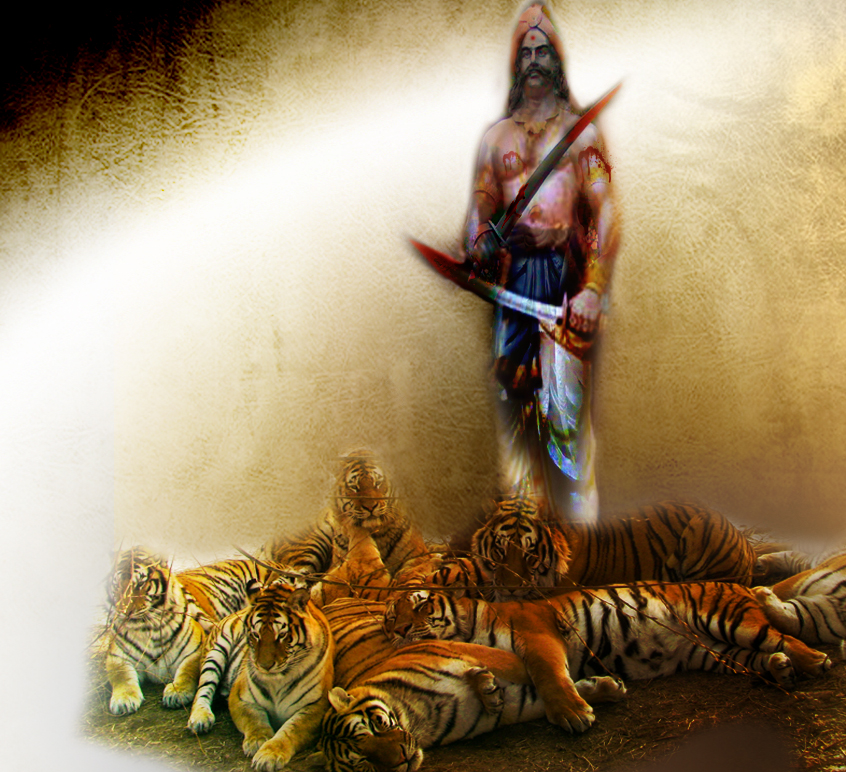 Some fear that encouraging a Hindu Kshatriya would create a militant Hindu fundamentalism. They imagine paramilitary Hindu groups, Hindu terrorists, or Hindu Jihads, as is the situation in Islam today. However, Hinduism is a pluralistic religion quite unlike exclusive monotheistic religions that can easily create a fundamentalism of One God, One Savior and One Book. There is no history of Hindu Jihad, nor of any Hindu terrorist activity to conquer the world.
Some fear that encouraging a Hindu Kshatriya would create a militant Hindu fundamentalism. They imagine paramilitary Hindu groups, Hindu terrorists, or Hindu Jihads, as is the situation in Islam today. However, Hinduism is a pluralistic religion quite unlike exclusive monotheistic religions that can easily create a fundamentalism of One God, One Savior and One Book. There is no history of Hindu Jihad, nor of any Hindu terrorist activity to conquer the world.
There is similarly no comparable Hindu missionary aggression as that of the Christians. The fear of Hindu militancy is more a fear of Hindu activism by groups that profit from a lack of Hindu political activity, mainly leftist and communist groups in India. On the contrary, it is leftist youth gangs who attack Hindu sadhus in Bengal, and it is Hindu workers who are murdered in Kerala by similar groups.
The idea that Hindu activism has to be avoided so as to prevent Hindu militancy, is like saying a person who has been beat up should not be allowed to stand up on his feet again because he is likely to become an aggressor like the person who trampled him down in the first place. Only Hindus seem to be willing to accept this politics of masochism. But they should at least recognize that no other group in the world does, nor did Hindus in classical India.
When the true Kshatriya spirit is not honored, a false Kshatriya takes power, which is what has happened in modern India. Gandhian politics has been replaced by socialist, communist and simply opportunistic policies of an adharmic nature. Had the true Kshatriya spirit not been already weakened, this would likely not have happened.
To awaken spiritually and culturally, India needs to reclaim its Kshatriya spirit, which is an integral part of its traditions. It needs to honor its Ramas, Arjunas, and Shivajis, who maintained their nobility and spirituality, though they had to resort to force to protect the Dharma. There is perhaps no other country so unappreciative of its great Kshatriyas, though there is perhaps no other country that has had Kshatriyas of such spiritual greatness.
The key to the revival of India lies in its Kshatriya spirit, which is integral to its spiritual heritage. The idea of the spiritual warrior and the warrior as a Dharmic force must arise again, not as apart from spiritual knowledge but as its manifestation.
A New Kshatriya
 Should Hindus take a more active Kshatriya role, other political and social groups may raise the image of Mahatma Gandhi against them, though they themselves do not lead Gandhian lives. It is not service to the nation that motivates these people, or defense of the country, but their personal agendas and the politics of vote banks. No doubt the possibility of assertive Hinduism scares the leftists in India and they will try to discredit it with the image of Hindu militancy, if not fascism.
Should Hindus take a more active Kshatriya role, other political and social groups may raise the image of Mahatma Gandhi against them, though they themselves do not lead Gandhian lives. It is not service to the nation that motivates these people, or defense of the country, but their personal agendas and the politics of vote banks. No doubt the possibility of assertive Hinduism scares the leftists in India and they will try to discredit it with the image of Hindu militancy, if not fascism.
Hindus must be willing to gain strength from it rather than feel apologetic, which will only weaken their resolve. As the Mahabharata states, the heart of a Kshatriya should be strong and unshakable like the thunderbolt, not weak and hypersensitive. Can anyone honestly say, even those who are not Hindus, that Hindus are suffering from an excessive Kshatriya spirit?
Who then are these Kshatriyas? They are Hindus engaged in traditional Kshatriya activities like army, police, government, legal system, and all forms of political and social activism. They must strive to follow a true Dharmic Kshatriya spirit, rather than the convenient corruption and obsequiousness that is common in India today. A Kshatriya of some sort is going to exist because these social roles must be filled by someone, the question is whether it will be Dharmic or not.
Let us remember the true Hindu Kshatriya ideal and its spiritual roots. A true Kshatriya is not violent in mind, but will only use force to protect Dharma against violent people when there is no other alternative. He will not be motivated by greed, fame or sectarian interests but will work selflessly for the universal good. Above all he is never a hypocrite, he will do what he says and say what he really does.
He will stand firm against all odds, even if it means to fight against a superior enemy. He will not quit without a fight, though he will not resort to violence unless he has no other choice. Such was the warrior spirit of Arjuna and this is what the nation of India really needs today, in fact all countries need it in this era of corruption and showmanship
[1] Note India’s Rebirth, Institute De Recherches Evolutives, Paris, pp. 160-162, 210-211 etc.
(23410)
 The person I refer to is known as Girish Shahane, who by his own account is the proud owners of multiple degrees from various institutions including Oxford University – we presume he means the world famous Oxford University as opposed to Oxford International College which was apparently recently closed by the Department of Further Education in the United Kingdom due to violations of the Immigration rules.
The person I refer to is known as Girish Shahane, who by his own account is the proud owners of multiple degrees from various institutions including Oxford University – we presume he means the world famous Oxford University as opposed to Oxford International College which was apparently recently closed by the Department of Further Education in the United Kingdom due to violations of the Immigration rules.

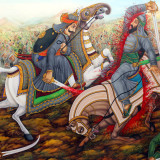
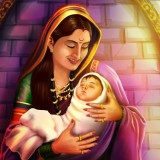













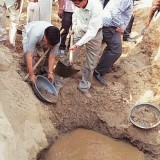



 We must discriminate between what we could call “absolute non-violence” and “relative non-violence.” Absolute non-violence means not even raising a hand even to defend oneself from unjust attack. Relative non-violence means only using violence to defend oneself and one’s community.
We must discriminate between what we could call “absolute non-violence” and “relative non-violence.” Absolute non-violence means not even raising a hand even to defend oneself from unjust attack. Relative non-violence means only using violence to defend oneself and one’s community.  Such dharmic warriors followed a long tradition including
Such dharmic warriors followed a long tradition including  To impose an artificial standard of non-violence on a society as a whole undermines the Kshatriya Dharma, or the political Dharma, and can damage the social order. It can undermine the will of a people to defend itself and weaken its sense of community identity. Those who have families and homes have a natural instinct to defend them when attacked. To tell such people that it is wrong for them to defend their loved ones is to make them feel guilty and confused.
To impose an artificial standard of non-violence on a society as a whole undermines the Kshatriya Dharma, or the political Dharma, and can damage the social order. It can undermine the will of a people to defend itself and weaken its sense of community identity. Those who have families and homes have a natural instinct to defend them when attacked. To tell such people that it is wrong for them to defend their loved ones is to make them feel guilty and confused. The great Swamis of India did not seek to undermine the Kshatriya Dharma. Adi Shankaracharya accepted the value of Kshatriya Dharma as he did a Vedic order for Hindu society. Let us also look at the example of the great Swami Vidyarananya of Sringeri (fourteenth century), an Advaitin (non-dualist) and a Mayavadin, who yet inspired two Hindu Kshatriyas who had become Muslims to reconvert to Hinduism and found the great Hindu kingdom of Vijayanagar to protect the Dharma. He did not ask for these Kshatriya rulers to follow absolute non‑violence.
The great Swamis of India did not seek to undermine the Kshatriya Dharma. Adi Shankaracharya accepted the value of Kshatriya Dharma as he did a Vedic order for Hindu society. Let us also look at the example of the great Swami Vidyarananya of Sringeri (fourteenth century), an Advaitin (non-dualist) and a Mayavadin, who yet inspired two Hindu Kshatriyas who had become Muslims to reconvert to Hinduism and found the great Hindu kingdom of Vijayanagar to protect the Dharma. He did not ask for these Kshatriya rulers to follow absolute non‑violence. To want to fight unrighteous people who are invading your country, or falsely ruling over your people, is the appropriate instinct of the Kshatriya, to deny which is to deny their vitality. Once the vitality of the Kshatriya – who represent the vital or energetic aspect of society – is weakened then the whole society can become devitalized. This dogmatic emphasis on non‑violence has set in motion a one‑sided teaching and a distortion that has weakened modern India.
To want to fight unrighteous people who are invading your country, or falsely ruling over your people, is the appropriate instinct of the Kshatriya, to deny which is to deny their vitality. Once the vitality of the Kshatriya – who represent the vital or energetic aspect of society – is weakened then the whole society can become devitalized. This dogmatic emphasis on non‑violence has set in motion a one‑sided teaching and a distortion that has weakened modern India. True Kshatriyas may come from any so-called caste today and are to be known by their character and their actions. Should there not be an adequate Kshatriya class in a country, all the other classes must take up a Kshatriya activity, even the Brahmins. In fact a true Brahmin must have learned the value of Kshatriya Dharma in order to be really able to go beyond it.
True Kshatriyas may come from any so-called caste today and are to be known by their character and their actions. Should there not be an adequate Kshatriya class in a country, all the other classes must take up a Kshatriya activity, even the Brahmins. In fact a true Brahmin must have learned the value of Kshatriya Dharma in order to be really able to go beyond it. Some fear that encouraging a Hindu Kshatriya would create a militant Hindu fundamentalism. They imagine paramilitary Hindu groups, Hindu terrorists, or Hindu Jihads, as is the situation in Islam today. However, Hinduism is a pluralistic religion quite unlike exclusive monotheistic religions that can easily create a fundamentalism of One God, One Savior and One Book. There is no history of Hindu Jihad, nor of any Hindu terrorist activity to conquer the world.
Some fear that encouraging a Hindu Kshatriya would create a militant Hindu fundamentalism. They imagine paramilitary Hindu groups, Hindu terrorists, or Hindu Jihads, as is the situation in Islam today. However, Hinduism is a pluralistic religion quite unlike exclusive monotheistic religions that can easily create a fundamentalism of One God, One Savior and One Book. There is no history of Hindu Jihad, nor of any Hindu terrorist activity to conquer the world. Should Hindus take a more active Kshatriya role, other political and social groups may raise the image of Mahatma Gandhi against them, though they themselves do not lead Gandhian lives. It is not service to the nation that motivates these people, or defense of the country, but their personal agendas and the politics of vote banks. No doubt the possibility of assertive Hinduism scares the leftists in India and they will try to discredit it with the image of Hindu militancy, if not fascism.
Should Hindus take a more active Kshatriya role, other political and social groups may raise the image of Mahatma Gandhi against them, though they themselves do not lead Gandhian lives. It is not service to the nation that motivates these people, or defense of the country, but their personal agendas and the politics of vote banks. No doubt the possibility of assertive Hinduism scares the leftists in India and they will try to discredit it with the image of Hindu militancy, if not fascism. 

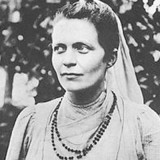
 In 1905-06 she was actively associated with all manner of Indian public affairs; but the strain of her efforts in the relief work in the flood and famine-stricken areas of East Bengal in 1906 broke her health. In August 1907 she left for Europe and America, and returned to India in July 1909.
In 1905-06 she was actively associated with all manner of Indian public affairs; but the strain of her efforts in the relief work in the flood and famine-stricken areas of East Bengal in 1906 broke her health. In August 1907 she left for Europe and America, and returned to India in July 1909.  She encouraged and whole-heartedly supported the Swadeshi (self-reliance) Movement both in principle and in practice. She helped nationalist groups like the `Dawn Society’ and the `Anusilan Samity’; was a member of the Central Council of Action formed by Sri Aurobindo Ghose and took up the editorship of the Karmayogin publication when he left British India.
She encouraged and whole-heartedly supported the Swadeshi (self-reliance) Movement both in principle and in practice. She helped nationalist groups like the `Dawn Society’ and the `Anusilan Samity’; was a member of the Central Council of Action formed by Sri Aurobindo Ghose and took up the editorship of the Karmayogin publication when he left British India.








